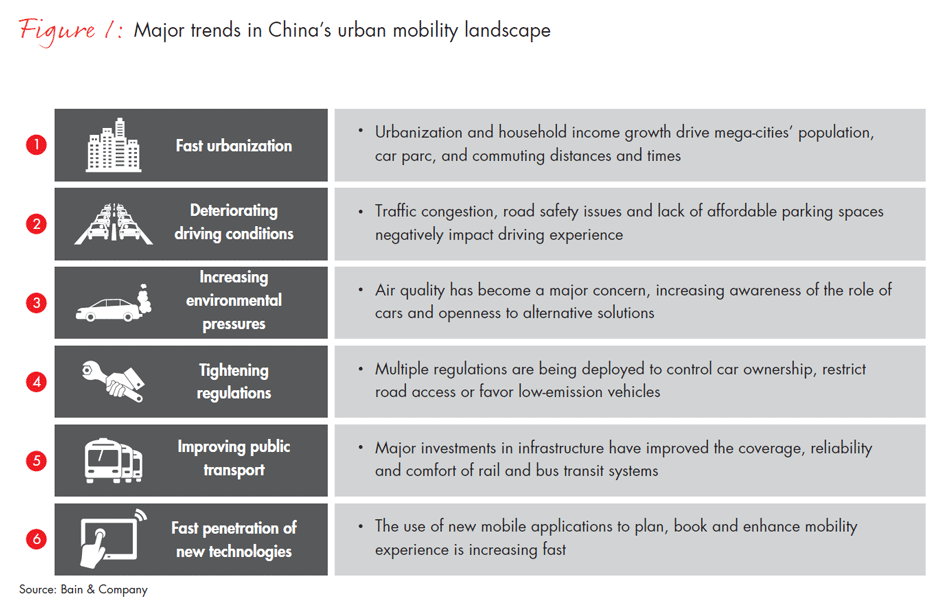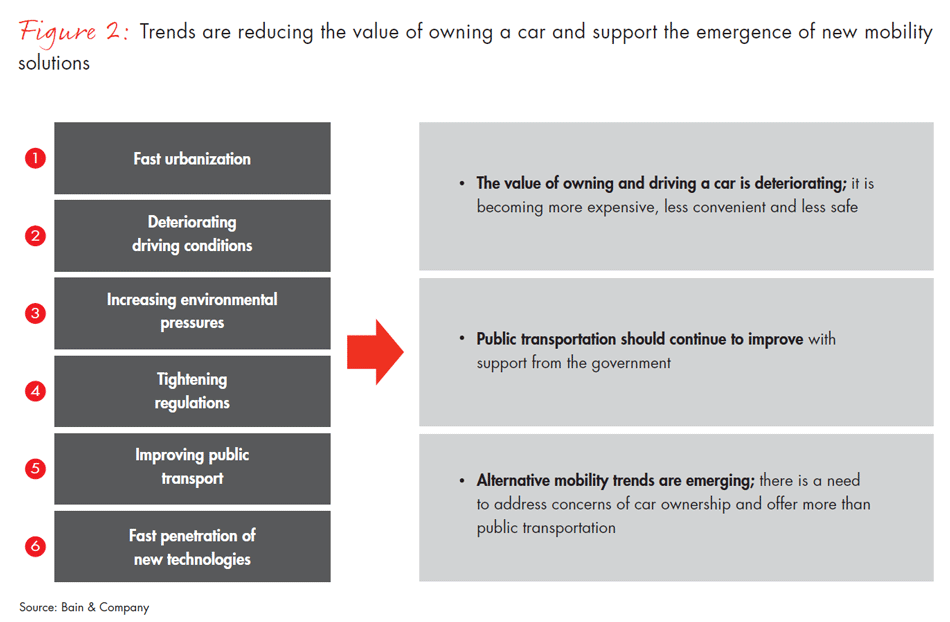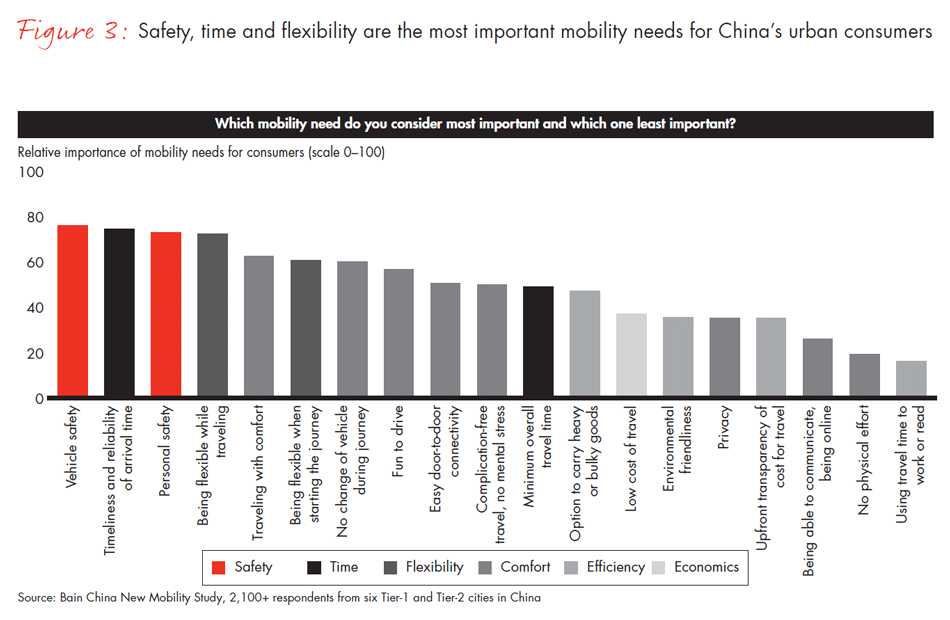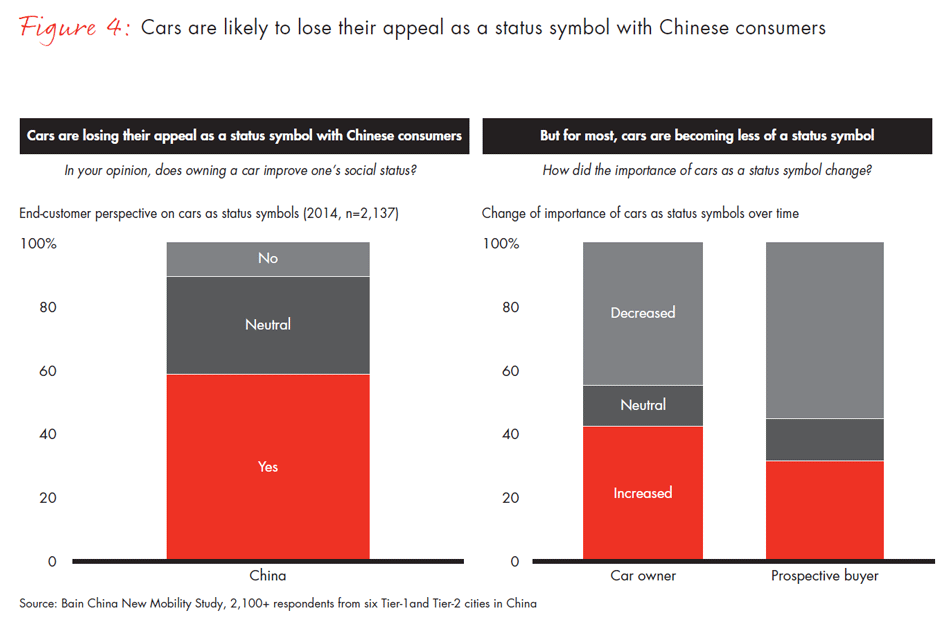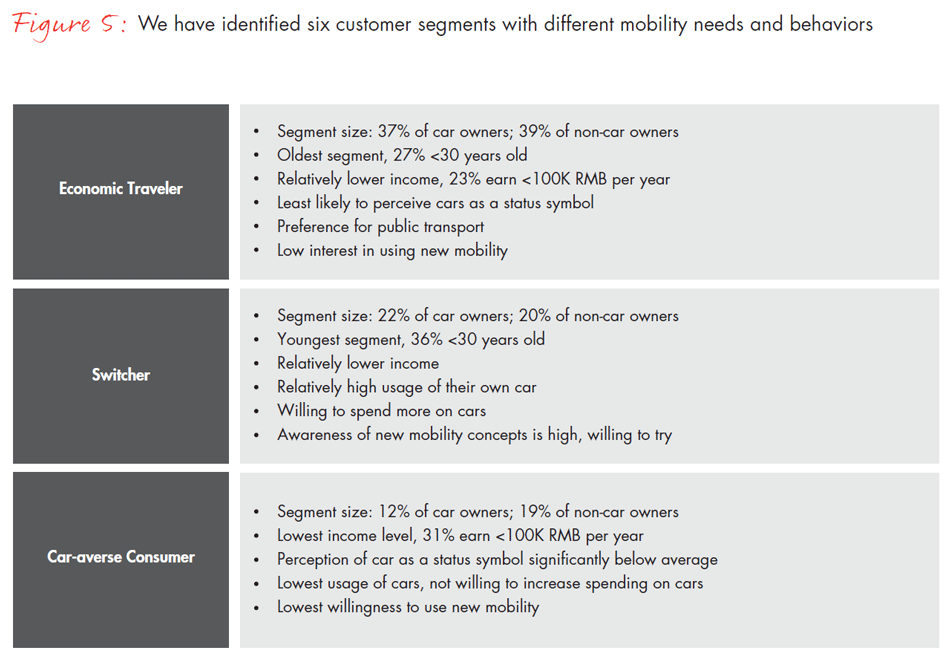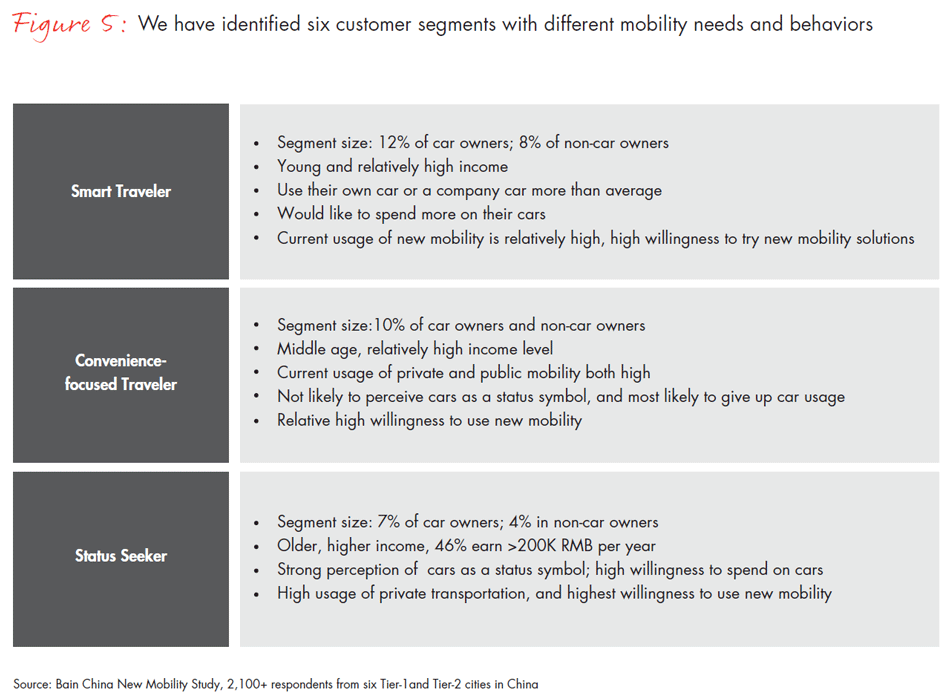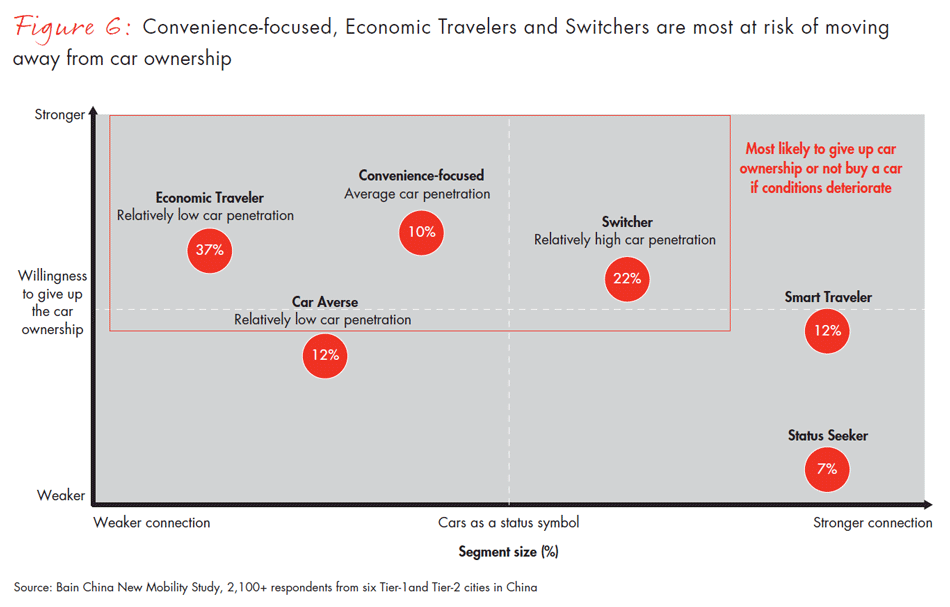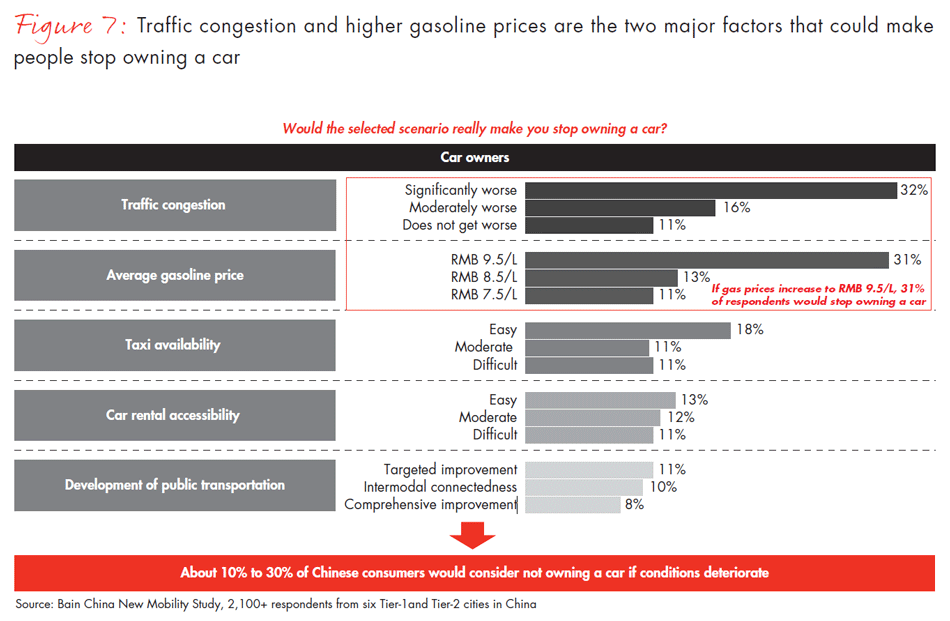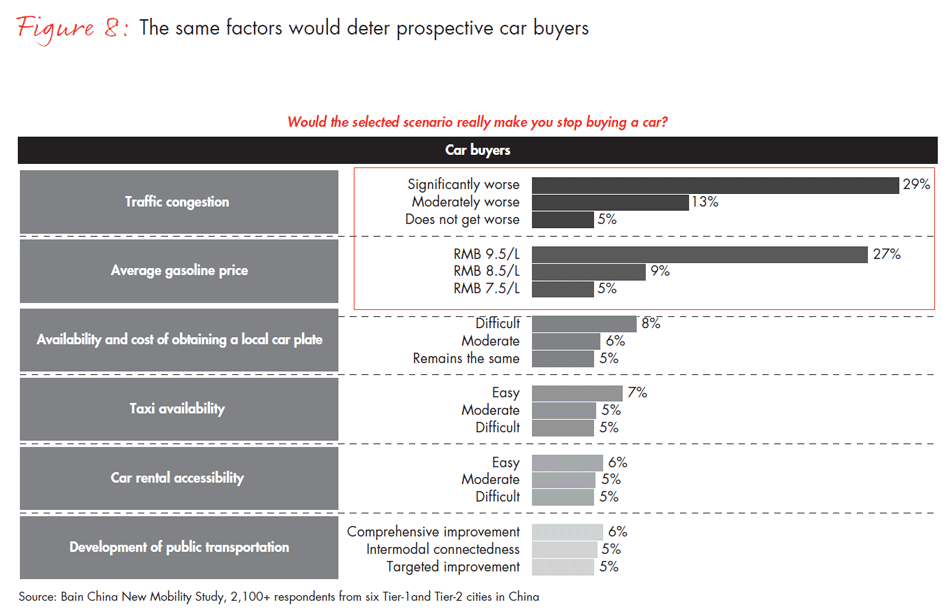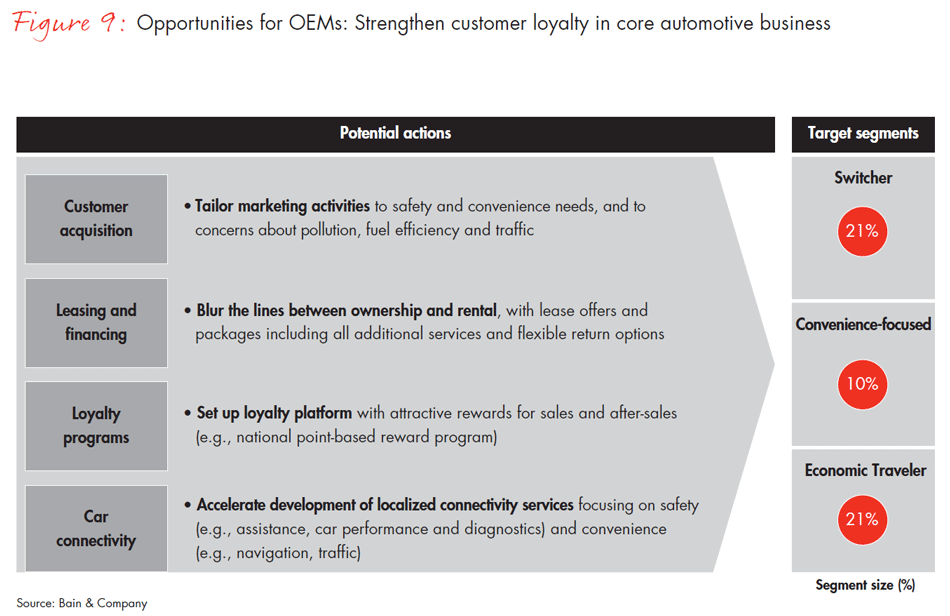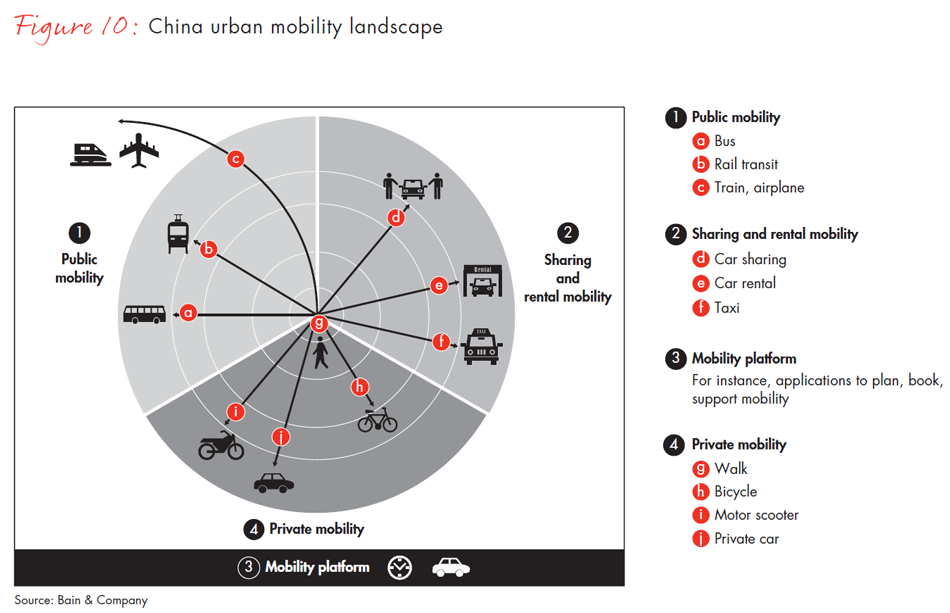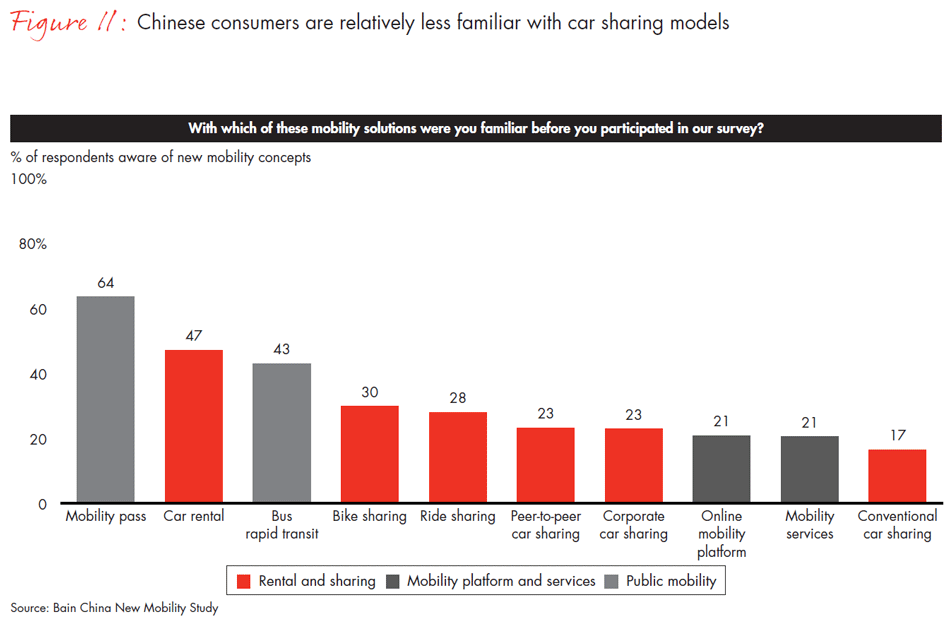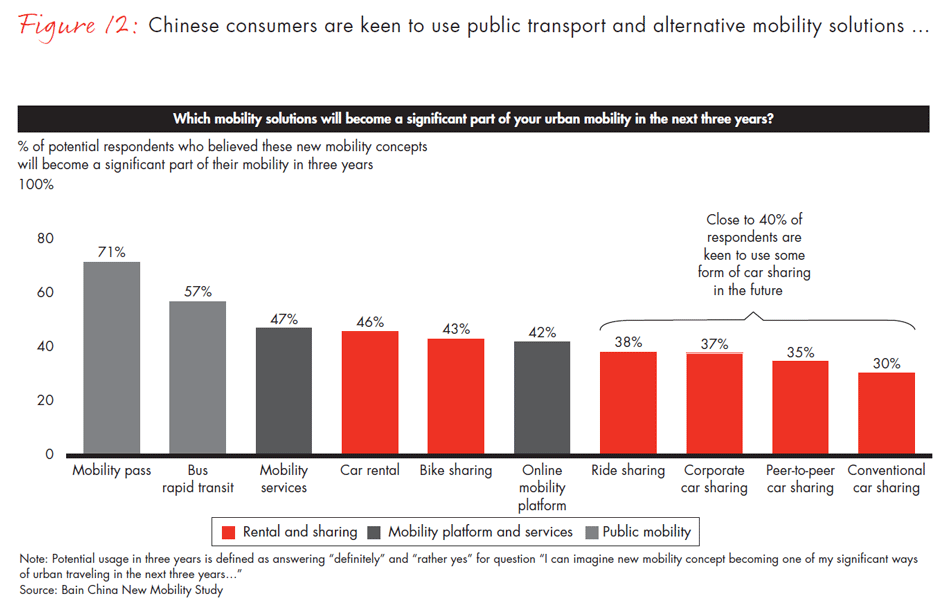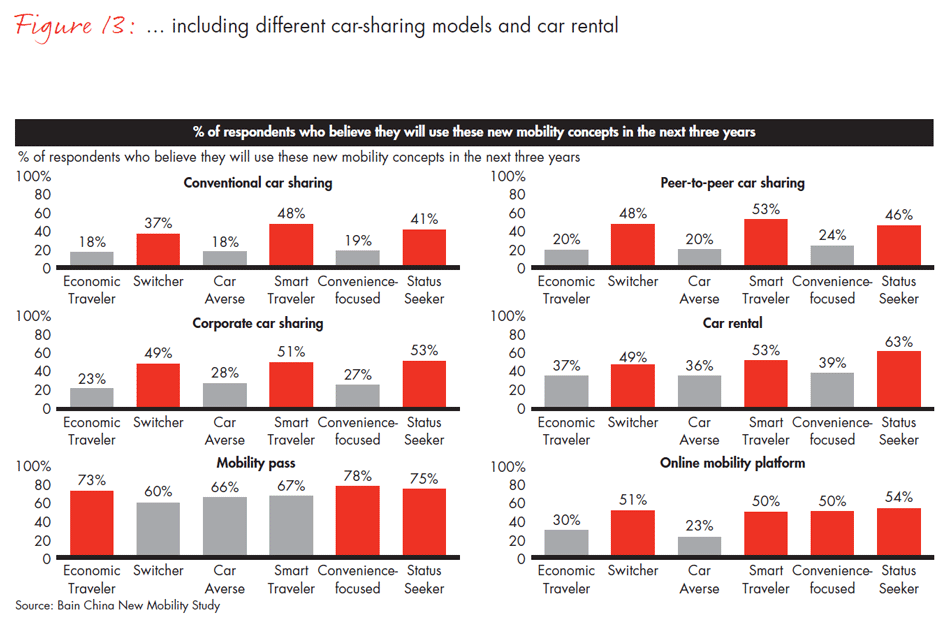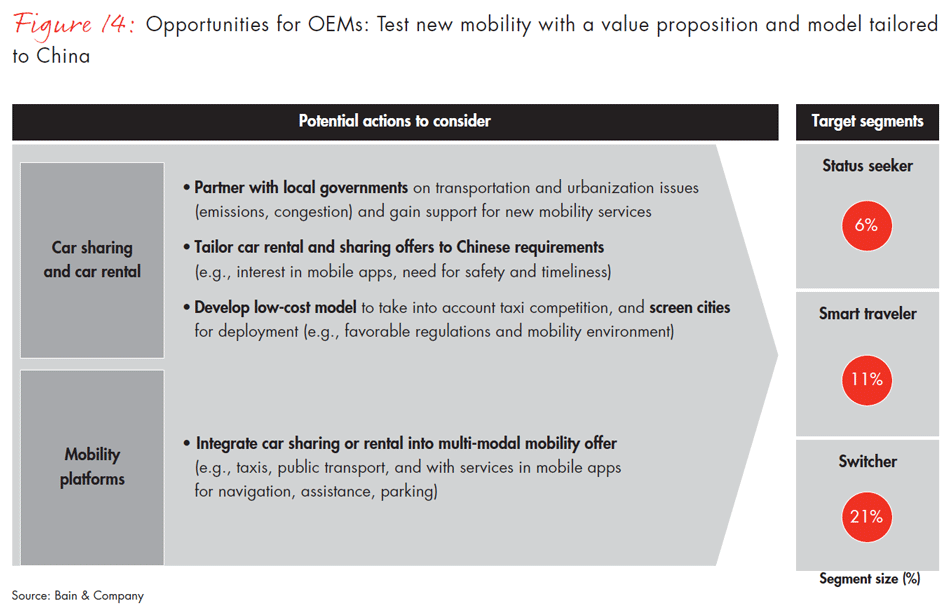Report
Car owners in China’s mega-cities are rethinking the value of car ownership. As rapid urbanization transforms China’s urban mobility landscape, car owners are increasingly forced to contend with deteriorating driving conditions and tighter regulations, making car ownership in these large urban areas more expensive and less convenient and safe—hence, less attractive.
At the same time, major infrastructure investment has made public transportation more accessible and convenient, while new mobility services and solutions like car sharing are being introduced— although still unfamiliar to many Chinese consumers.
According to a survey of car owners from six Tier-1 and Tier-2 cities in China, select segments would consider giving up their cars if conditions continue to decline. Respondents identified trends like deteriorating driving conditions and tighter regulations as detracting from car ownership. They also cited improved public transportation, taxi availability, car rental accessibility and the emergence of new mobility solutions as contributing factors in their willingness to give up their cars.
Whereas many Chinese still associate car ownership with status, cars are losing their appeal as a status symbol in most segments in China’s mega-cities. What China’s urban consumers today value most is safe, on-time, flexible and reliable mobility.
In addition, Chinese consumers cite traffic congestion and higher gasoline prices as major factors that would prevent them from owning or buying a car. If traffic conditions continue to deteriorate significantly or gas prices increase sharply, 10% to 30% of current car owners say they would consider giving up their cars.
Ray Tsang, a partner in Bain's Industrial Goods & Services practice, discusses how deteriorating driving conditions and high costs are prompting some car owners in China to reassess their mobility options.
Chinese show a keen interest in using public transportation and in new mobility solutions tailored to local needs. A strong follow-up on the public’s stated determination to use car rentals, car sharing and public transportation will remain an important factor in the development of new mobility solutions.
We have identified six customer segments with different needs and behaviors that run the gamut from those least to those most interested in using new mobility solutions. Among these, Status Seekers, Smart Travelers and Switchers expressed the greatest interest in new mobility, while Economic Travelers, the Car Averse and Convenience-focused expressed the least interest in new solutions such as car sharing and rental models.
Changing trends in China’s urban mobility present a challenge for creating new mobility solutions while also protecting China’s automotive business. To protect core automotive business, OEMs will partner with local governments to seek solutions to urbanization problems of traffic congestion and emissions, set up loyalty programs targeted at segments most “at risk,” and propose more flexible solutions, such as leasing, to attract new customers.
China also offers OEMs a unique opportunity to develop mobility solutions tailored specifically to China’s situation. Services like car sharing will need to meet Chinese customer needs for safety and flexibility, to integrate local infrastructure constraints like parking, and to compete with low-cost taxis and public transport. Success will require major changes from concepts that have emerged in Europe or North America.
